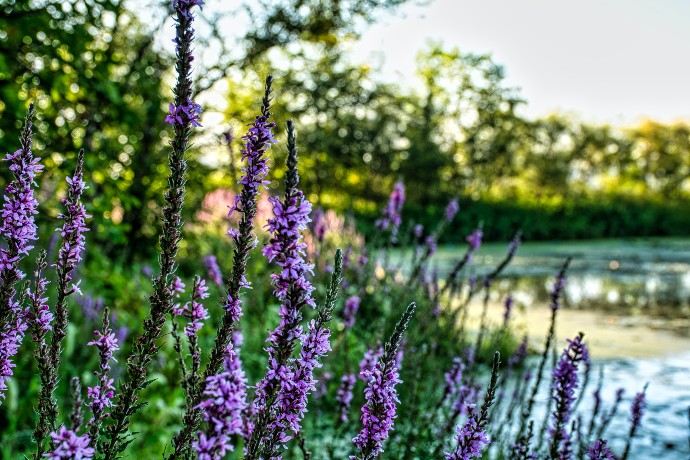A Framework to Develop New Approaches for Managing Invasive Plants in Natural and Agricultural Systems of Utah

One of the biggest and most complex problems facing society today is the issue of invasive plants. While the general public may not view invasive plants as a threat or even a problem, their importance is well documented scientifically and their impacts on society (health risks), economies (production systems), and the environment (loss of diversity) are staggering. Invasive plants can establish in diverse environments, and, with the increase in human mobility, they are no longer restricted to isolated pockets in remote locations. Cheatgrass in rangelands, purple loosestrife in wetlands, and tamarisk in riparian areas are examples of invasive plants that are common to Utah and can be found in monocultures and patches covering a few to many thousands of acres. Other invasive plants, such as kochia, field bindweed, and prickly lettuce, have developed a tolerance to single tactic approaches in agro-ecosystems. Invasive plants can reduce water flow, alter fire regimes, and limit yields while costing thousands of dollars in control and lost productivity.
While the effects of invasive plants can be devastating, the approach taken for management is often without considering the underlying mechanisms; this prevents successful control of these species at larger scales. Invasive plants continue to consume more area, which threaten the sustainability of plant, animal, insect, soil nutrient, and - ultimately - human systems. The goal of my project is to understand the underlying mechanisms of how and why invasive plants exist, where they exist, and the conditions in which they exist using an invasion factor framework. As new knowledge is generated, its application to natural- and agro-ecosystems will allow for the development of more sustainable strategies for managing and maintaining important natural resources. Through plant competition studies, my project will be addressing the factors of ecosystem resistance, invader fitness, and climate dynamics that are fundamental in limiting invasion success, thus helping to 1) improve the quality of life for Utahns and 2) sustain the state’s natural and agro-ecosystems.
Research on global climate change has predicted that extreme weather events will increase in the continental U.S. within the next 100 years. While much research has focused on plants important to agricultural production and rangeland restoration, invasive plants have received little attention. In order to better understand the mechanisms that will allow invasive plants to successfully establish in novel or climate-altered ecosystems of the future, it is critical to study the phenotypic traits of invasive plants as they evolve under extreme climatic events and develop drought-resistant populations. It has been postulated that invasive plants exhibit greater climatic tolerance ranges in invaded habitats than in their native habitats. For extreme events such as drought, a combination of both phenotypic and genetic adaptation could be equally important for invasive plants to survive and proliferate. By isolating drought-resistant individuals in manipulative experiments, traits can be quantified for a range of invasive plants. Ultimately, this new area of research will provide a greater understanding of how invasive plants differ in their adaptation to habitats at the molecular to population scale.
Within the last decade, an increasingly critical question is being asked regarding agriculture, which is, ""Can we sustain (increase) production with our current management practices?” We are now faced with the reality that our current production systems cannot support the expected increase in world population by the year 2050. With the increases in herbicide resistant weeds, off-target movement of pesticides, organic production, threats of widespread disease and pest outbreaks, and public concern for safe food supplies, in addition to the abovementioned onset of a warmer, drier climate, it would be unwise to ignore the importance of developing new and/or enhancing current ecologically-based management strategies to lower inputs and incorporate advanced computer technologies, such as robotics, sensors, and guidance and communication systems. My project is part of a group that includes ecologists, engineers and agronomists working with computer scientists to address the complexities of natural and agro-ecosystems with regard to invasive plants.
A more holistic approach is needed for managing natural- and agro-ecosystems where invasive plants exist and threaten habitats, natural resources, and livelihoods. By using a framework that addresses the key factors contributing to the successful establishment of invasive plants, a research program can be built that has a clear mission and leads to sustainable management solutions. In combination with educational endeavors, such as a short course for practitioners, research could be expanded and shared with stakeholders, land managers, and professionals from Utah and neighboring regions through a first-ever, Invasive Plant Research and Training Center at USU. No other state is like Utah with the diversity of invasive plants in both natural and agro-ecosystems and facing climate change and a growing urban population. A Center focused specifically on invasive plants through research and training would be able to address immediate and future needs of our society by producing and disseminating new knowledge on the science of invasive plants.

